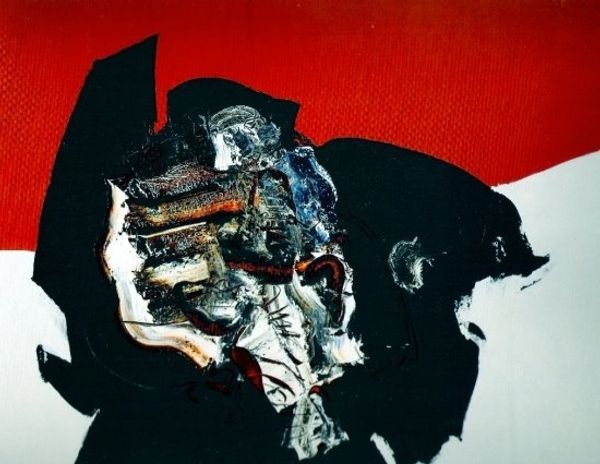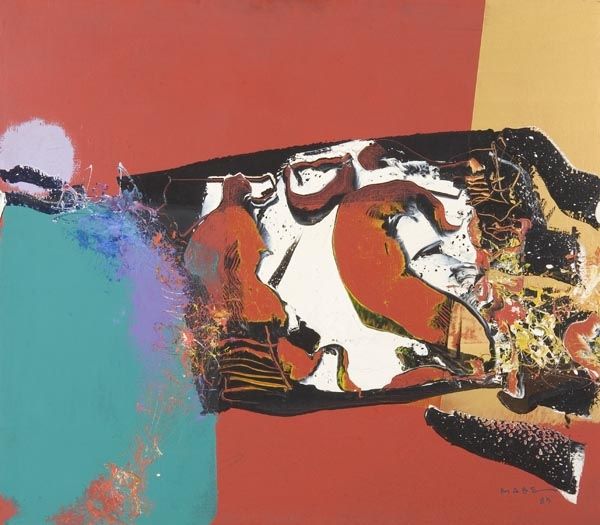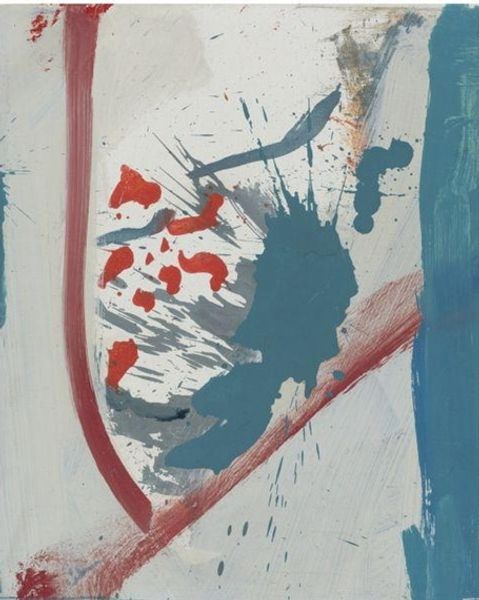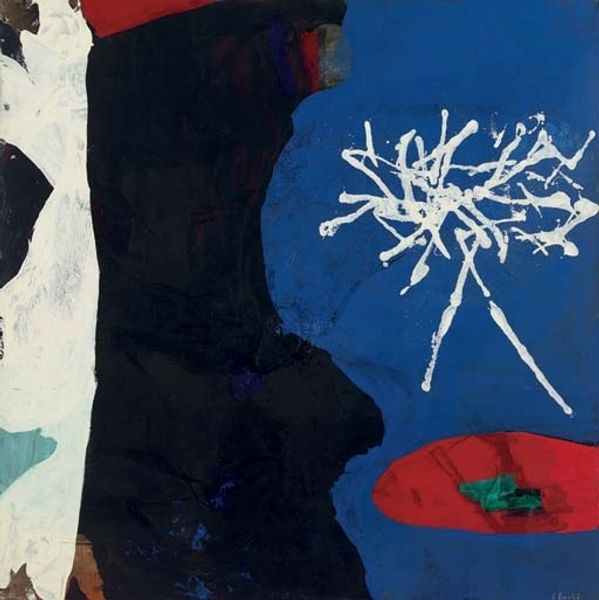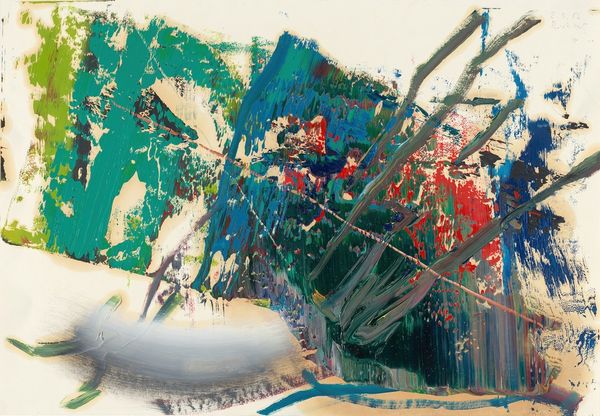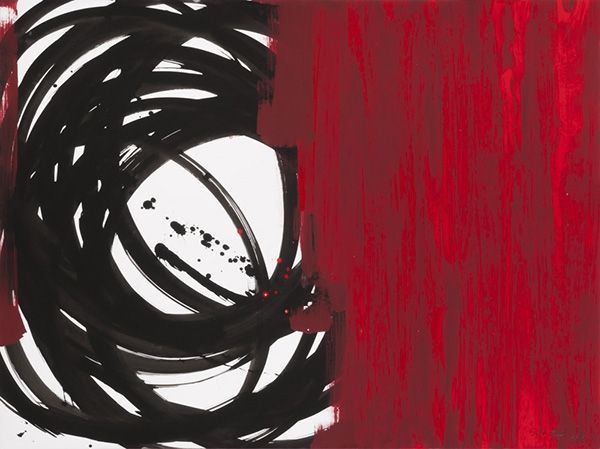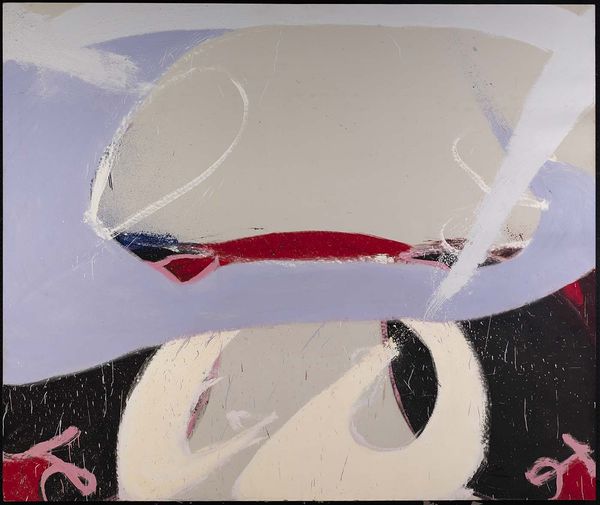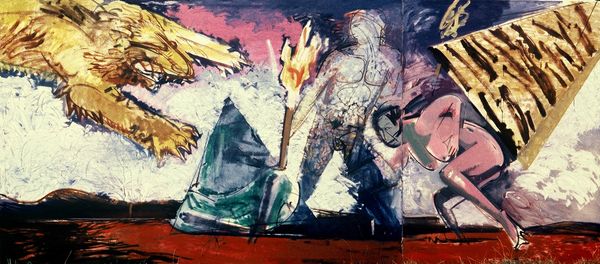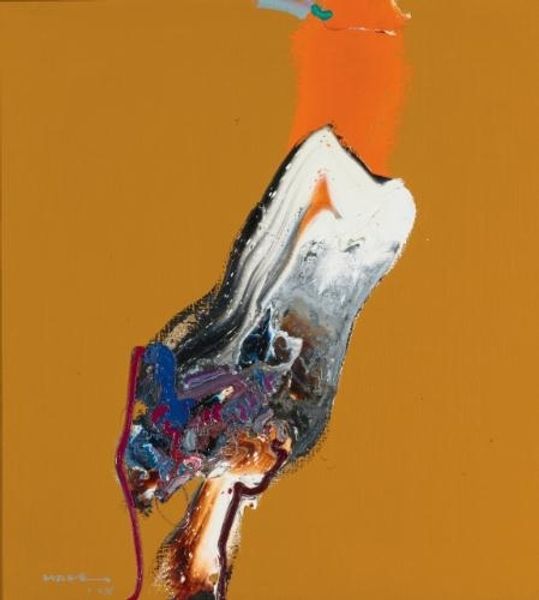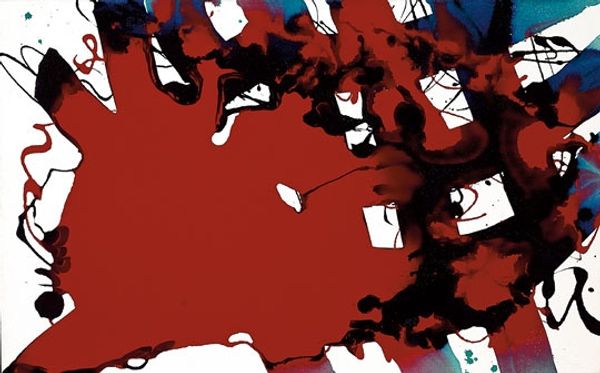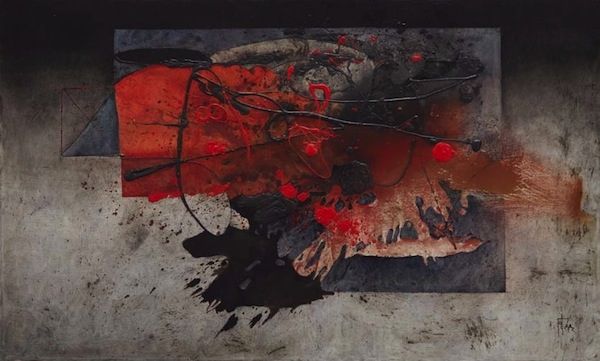
Copyright: Manabu Mabe,Fair Use
Editor: Here we have "Age," a 1985 acrylic on canvas work by Manabu Mabe. I’m immediately struck by the bold colors and textures, a kind of controlled chaos that feels very raw and emotional. How do you interpret this work? Curator: This painting speaks to me of the historical moment of its creation, situated between the exuberance of mid-century Abstract Expressionism and the growing political consciousness of the 1980s. Consider the use of vibrant colors, seemingly joyous, yet restrained by the artist’s aggressive, almost violent, application of paint. Could this reflect the tensions between personal expression and the sociopolitical anxieties of the time, particularly regarding aging populations facing uncertain futures? Editor: I hadn't thought about it in those terms. I was mainly responding to the pure energy of the brushstrokes. Do you think Mabe was consciously addressing those social anxieties? Curator: Consciously or not, artists are products of their environment. Abstraction itself can be seen as a response to societal upheavals, a move away from representation during times of profound change. The ‘matter painting’ aspect—the thick, almost sculptural quality of the paint—emphasizes the physical and material reality of aging, the way time literally accumulates and changes things. What emotions are evoked when you see this heavy application of matter on canvas? Editor: I see what you mean. It’s less about the beauty of aging, and more about its weight and complexity, even the potential decay involved. That’s a lot to unpack. Curator: Precisely! Art often works on multiple levels, reflecting personal experiences within larger cultural and political narratives. It invites us to question and reconsider established perspectives, wouldn't you agree? Editor: Absolutely. I definitely have a deeper appreciation for the piece now. It’s more than just bold colors on canvas.
Comments
No comments
Be the first to comment and join the conversation on the ultimate creative platform.

